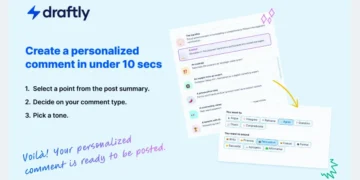In the ever-evolving landscape of artificial intelligence, OpenAI stands tall as a pioneer, consistently pushing the boundaries of what’s possible. Their recent updates, spanning new integration models, enhanced moderation, and advanced API key management, paint a picture of innovation and progress. In this comprehensive exploration, we delve into the intricacies of these updates, unveiling the transformative potential they bring to developers, researchers, and organizations alike.
OpenAI’s Latest Updates
Cutting-Edge Integration Models: A Game-Changer for Developers
OpenAI has introduced two groundbreaking embedding models that are poised to revolutionize the field. Among them, the text-embedding-3-small model steals the spotlight with its remarkable advancements over its predecessor, text-embedding-ada-002. Boasting higher benchmark scores and a substantial 5x reduction in pricing, it emerges as a compelling choice for developers seeking efficient integrations.
Flexible Embedding Shortening: Tailoring Concepts to Precision
What sets these new integration models apart is their unparalleled flexibility. Developers now wield the power to shorten embeddings without compromising precision. By specifying dimensions, they can optimize performance and cost, catering to a diverse array of applications with ease.
Turbocharged GPT-3.5: A Boost in Performance and Cost Efficiency
OpenAI unveils the upgraded gpt-3.5-turbo-0125, a testament to their commitment to refining models for optimal user experience. This updated model comes with reduced input and output prices, providing a significant boon for developers looking to streamline costs. Notably, it addresses issues with text encoding for non-English function calls, showcasing OpenAI’s dedication to global inclusivity.
GPT-4 Turbo: Bridging the Laziness Gap
GPT-4 Turbo has witnessed substantial adoption, with over 70% of API requests transitioning to this version. Responding to user feedback, OpenAI introduces the gpt-4-0125-preview, an enhanced preview model excelling in code generation. Aimed at tackling model “pereza” or laziness, it resolves UTF-8 generation errors in languages other than English. With a new alias, gpt-4-turbo-preview, users gain access to the latest GPT-4 Turbo preview models seamlessly.
OpenAI tantalizes us with the promise of GPT-4 Turbo’s upcoming vision capabilities, set to elevate the model’s prowess in handling multimodal tasks, further expanding its already vast range of potential applications.
Fortifying Security: Text-Moderation-007 Takes the Lead
In the relentless pursuit of safety, OpenAI introduces text-moderation-007, their most robust moderation model to date. This model plays a pivotal role in identifying potentially harmful text, reinforcing OpenAI’s commitment to creating a secure online environment.
Empowering Developers: API Key Management Upgrades
OpenAI introduces significant enhancements to API key management, granting developers greater control and visibility into their API usage. The ability to assign permissions to API keys allows for multiple levels of access, providing a nuanced approach to usage control. The usage dashboard and export feature offer detailed metrics at the API key level, facilitating a granular understanding of API usage.
Undoubtedly, these updates usher in a new era for developers, researchers, and organizations. The increased flexibility and enhanced capabilities they bring to the table promise to reshape the landscape of artificial intelligence applications.
See also: ChatGPT for Military Use: OpenAI’s Policy Shift
Conclusion
In conclusion, OpenAI’s recent updates mark a significant leap forward in the realm of artificial intelligence. From cutting-edge integration models to enhanced moderation and API key management, these advancements underscore OpenAI’s commitment to providing developers, researchers, and organizations with powerful tools and increased flexibility. As we navigate the ever-evolving landscape of AI, these updates pave the way for a more efficient and inclusive future, promising transformative possibilities in diverse applications.
FAQs
Q1: What makes the text-embedding-3-small model stand out?
A1: The text-embedding-3-small model stands out for its remarkable improvements over its predecessor, text-embedding-ada-002. With higher benchmark scores and a substantial 5x reduction in pricing, it emerges as an attractive choice for developers seeking efficient integrations.
Q2: How do the new integration models offer flexibility to developers?
A2: The new integration models introduce flexibility by allowing developers to shorten embeddings without compromising precision. By specifying dimensions, developers can optimize performance and cost, making these models suitable for a wide range of applications.
Q3: What are the key features of the upgraded GPT-3.5 Turbo model?
A3: The gpt-3.5-turbo-0125 model comes with reduced input and output prices, providing a significant cost advantage for developers. It also addresses text encoding issues for non-English function calls, showcasing OpenAI’s commitment to global inclusivity.
Q4: How does GPT-4 Turbo address model “pereza” or laziness?
A4: GPT-4 Turbo addresses model laziness with the introduction of gpt-4-0125-preview, an enhanced preview model excelling in code generation. It aims to resolve UTF-8 generation errors in languages other than English, offering an improved user experience.
Q5: What is the significance of text-moderation-007 in OpenAI’s updates?
A5: Text-moderation-007 is OpenAI’s most robust moderation model to date. It plays a crucial role in identifying potentially harmful text, reaffirming OpenAI’s commitment to creating a secure online environment.
Q6: How do the API key management upgrades benefit developers?
A6: The API key management upgrades offer developers greater control and visibility. With the ability to assign permissions to API keys and detailed metrics at the API key level, developers gain nuanced control over their API usage.
Q7: What can we expect from GPT-4 Turbo’s upcoming vision capabilities?
A7: GPT-4 Turbo’s upcoming vision capabilities promise to elevate the model’s prowess in handling multimodal tasks, expanding its potential applications even further.
Follow us on our social networks and keep up to date with everything that happens in the Metaverse!
Twitter Linkedin Facebook Telegram Instagram Google News Amazon Store
Recent Posts
- AI and Autonomous Vehicles: The Road to Self-Driving Cars
- Best Crypto Exchanges with lowest fees in 2025
- How to accept Bitcoin Payments and other Cryptocurrency as a Business
- Metaverse Fashion Week 2025: Global Designers Challenge Borders, Identity, and the Limits of Physical Fashion
- Elon Musk’s AI platform — Presentation of New AI Assistant from ArbitrageScanner. Traders review












































